Hey pasta lovers! Let me share the magic of Traditional Carbonara Recipe - imagine perfectly cooked spaghetti wrapped in a silky sauce that's all about fresh eggs, punchy Pecorino Romano, and plenty of black pepper. The star of the show? Those irresistible cubes of crispy guanciale, lending their rich flavor to every delicious bite.
You know what's amazing about this Traditional Carbonara Recipe? It's beautifully simple! While you'll find all sorts of versions out there, the authentic Roman way keeps it pure and perfect - no cream, no garlic, just a few quality ingredients doing what they do best. It's been winning hearts in Rome for generations, and now it's your turn to bring this magic into your kitchen!
The History Behind Traditional Carbonara Recipe
Get ready to fall in love with your new favorite pasta! This garlic butter shrimp pasta is a total game-changer - we're talking perfectly cooked shrimp and pasta swimming in the most amazing garlicky, buttery sauce. The best part? It's super quick (just 20 minutes!) but tastes like you spent hours in the kitchen.
The zesty lemon brightens everything up, while fresh parsley adds that pop of color and flavor that'll make your mouth water. And hey, no fancy ingredients needed - just grab those kitchen staples you probably already have! Whether you like it mild or with a kick, you can totally make it your own. Perfect for those crazy weeknights, but trust me, it's fancy enough to impress on date night too! Ready to make some magic happen in your kitchen?
Don't worry if you're just starting out or you're a seasoned cook - mastering this Traditional Carbonara Recipe is such a rewarding journey. Sure, it might take a few tries to get that sauce just right, but once you nail that perfect balance - those silky strands of pasta, those salty bites of guanciale, that peppery kick - you'll totally get why this dish has become such a beloved classic. Ready to give it a try? Let's make some carbonara magic together!
Jump to:
- The History Behind Traditional Carbonara Recipe
- Ingredients
- Traditional Carbonara Recipe Instructions
- Hints and Tips
- Dietary Considerations & Serving Suggestions
- Recipe Variations
- Storage Instructions
- Essential For Traditional Carbonara Recipe
- Top Tip
- Grandma's Magic Touch
- FAQ
- How did your Traditional Carbonara Recipe turn out?
- Related
- Pairing
- Easy Traditional Carbonara Recipe
Ingredients
For this Traditional Carbonara Recipe, authenticity is key. Each ingredient plays a crucial role:
- 1 pound (450g) spaghetti or rigatoni
- 6 ounces (170g) guanciale, diced (can substitute with pancetta)
- 4 large eggs (2 whole eggs plus 2 yolks)
- 1½ cups (150g) freshly grated Pecorino Romano
- 2 teaspoons freshly ground black pepper
- Salt for pasta water
Traditional Carbonara Recipe Instructions
Let's make this Traditional Carbonara Recipe super easy to follow!
First Up - The Prep!
- Get that water boiling and make it salty like the sea! While that's happening, grab a bowl and whisk those eggs, yolks, and Pecorino together. Add some pepper - we'll save the rest for later! Cut up your guanciale into bite-sized pieces.
Time for the Guanciale!
- Pop those guanciale pieces in a skillet over medium heat until they're nice and crispy (about 8-10 minutes). That fat that melts off? Pure gold - keep it in the pan!
Pasta Time!
- Cook your pasta until it's perfectly al dente. Quick tip: save about 1½ cups of that starchy pasta water before draining - it's like liquid gold for our sauce!
The Magic Moment - Making the Sauce!
- Here's where it gets fun! Toss that hot pasta into your guanciale pan. Now, quickly whisk some hot pasta water into your egg mixture (this prevents scrambling), then pour it all over your pasta. Keep tossing - this is your arm workout for the day!
The Grand Finale!
- Sprinkle in the rest of your pepper and cheese, keep tossing until everything's glossy and gorgeous. Serve it right away while it's hot, with extra cheese and pepper on top because... why not?
Hints and Tips
- Temperature Control: The key to perfect carbonara is managing heat. You want the pasta hot enough to cook the eggs slightly but not so hot that they scramble.
- Fresh Ingredients: Use the freshest eggs possible for the best texture and flavor.
- Cheese Matters: Always grate your Pecorino Romano fresh - pre-grated cheese won't melt properly.
Dietary Considerations & Serving Suggestions
While traditional carbonara isn't suited for vegetarians or those avoiding eggs, it's a protein-rich dish that's deeply satisfying. Serve it as a main course with:
- A light green salad with lemon vinaigrette
- A crisp Italian white wine like Frascati or Vermentino
- Grilled vegetables on the side
Recipe Variations
While purists might disagree, here are some accepted variations:
- Substitute guanciale with pancetta or high-quality bacon
- Use Parmigiano-Reggiano instead of Pecorino Romano
- Try different pasta shapes like rigatoni or bucatini
Storage Instructions
Carbonara is best enjoyed immediately after preparation. However, if you must store leftovers:
- Keep in an airtight container in the refrigerator for up to 2 days
- Reheat gently with a splash of water to restore creaminess
- Avoid freezing as it will affect the texture of the sauce
Essential For Traditional Carbonara Recipe
- Large pot for cooking pasta
- Large skillet or sauté pan
- Wooden spoon or tongs
- Large mixing bowl
- Cheese grater
- Colander
Top Tip
The single most important secret to perfect Traditional Carbonara Recipe is timing. Have all ingredients measured and ready before you start cooking. Once the pasta is done, you need to work quickly to create the signature silky sauce.
Grandma's Magic Touch
This Traditional Carbonara Recipe carries generations of wisdom. Like Nonna taught us, success lies in the details - tempering eggs for silky sauce, patiently crisping guanciale, and carefully incorporating pasta water. Our Traditional Carbonara Recipe follows time-tested techniques: room-temperature eggs for the smoothest sauce and listening for that perfect guanciale sizzle.
You see, Grandma always said carbonara isn't just about the ingredients - it's about the love and care you put into each step. She'd insist on room-temperature eggs for the smoothest sauce, and taught us to listen to the subtle sizzle of the guanciale to know exactly when it's ready. These little details might seem simple, but they're what transforms a good carbonara into an unforgettable family tradition.
So when you make this Traditional Carbonara Recipe, remember - take your time, trust your instincts, and channel that grandmotherly patience. Because sometimes, the most important ingredient is the love you stir into every bite!
FAQ
What are the ingredients in traditional carbonara?
Authentic traditional carbonara requires just 5 key ingredients: high-quality spaghetti or rigatoni, fresh eggs, guanciale (cured pork cheek), freshly grated Pecorino Romano cheese, and black pepper. No cream, garlic, or other additions are used in the traditional Roman recipe.
What is the golden rule of cooking a carbonara?
The golden rule of carbonara is temperature control. Never add the egg mixture to hot pasta directly on the heat, as this will scramble the eggs. Instead, toss the pasta off-heat with the tempered egg mixture to create a silky, smooth sauce.
What is carbonara sauce made of?
Traditional carbonara sauce consists of beaten whole eggs and egg yolks mixed with finely grated Pecorino Romano cheese and black pepper. The sauce becomes creamy when combined with hot pasta and a small amount of starchy pasta cooking water - no cream is ever used.
How does Gordon Ramsay make carbonara?
While Gordon Ramsay's method respects the traditional technique, he emphasizes careful temperature control and uses a mixture of whole eggs and yolks, Pecorino Romano cheese, and pancetta. He particularly stresses the importance of working quickly and tossing the pasta off-heat to achieve the perfect silky sauce.
How did your Traditional Carbonara Recipe turn out?
Ready to savor something new? This recipe is sure to impress with its perfect balance of silky egg sauce, crispy pancetta, and sharp Pecorino Romano cheese. If you're a fan of classic Italian pasta dishes, be sure to try our Ditalini Pasta Recipe next - more delicious Roman pasta traditions!
Did you make this Traditional Carbonara Recipe? We'd love to hear about your experience! Leave a star rating and share your thoughts in the comments.
Did you try using guanciale instead of pancetta or add an extra egg yolk for extra richness? Your feedback not only helps others but also contributes to our growing community of home cooks. Don't forget to share a photo of your creamy pasta creation!
Related
Looking for other recipes like this? Try these:
Pairing
These are my favorite dishes to serve with Traditional Carbonara Recipe
Easy Traditional Carbonara Recipe
Equipment
- Large pot for cooking pasta
- Large skillet or sauté pan
- Wooden spoon or tongs
- Large mixing bowl
- Cheese grater
- Colander
Ingredients
- 1 pound 450g spaghetti or rigatoni
- 6 ounces 170g guanciale, diced
- 4 large eggs 2 whole eggs plus 2 yolks
- 1½ cups 150g freshly grated Pecorino Romano
- 2 teaspoons freshly ground black pepper
- Salt for pasta water
Instructions
- Bring a large pot of salted water to boil
- In a bowl, whisk eggs, egg yolks, and 1 cup Pecorino Romano
- Cut guanciale into ¼-inch thick strips
- Cook guanciale until crispy (8-10 minutes)
- Cook pasta until al dente
- Reserve 1½ cups pasta water
- Add hot pasta to guanciale
- Temper egg mixture with ½ cup pasta water
- Toss pasta with egg mixture off heat
- Add remaining cheese and pepper
- Adjust consistency with pasta water
- Serve immediately
Notes
- Best served immediately
- Temperature control is crucial
- Never add eggs while on heat
- Use freshest ingredients possible

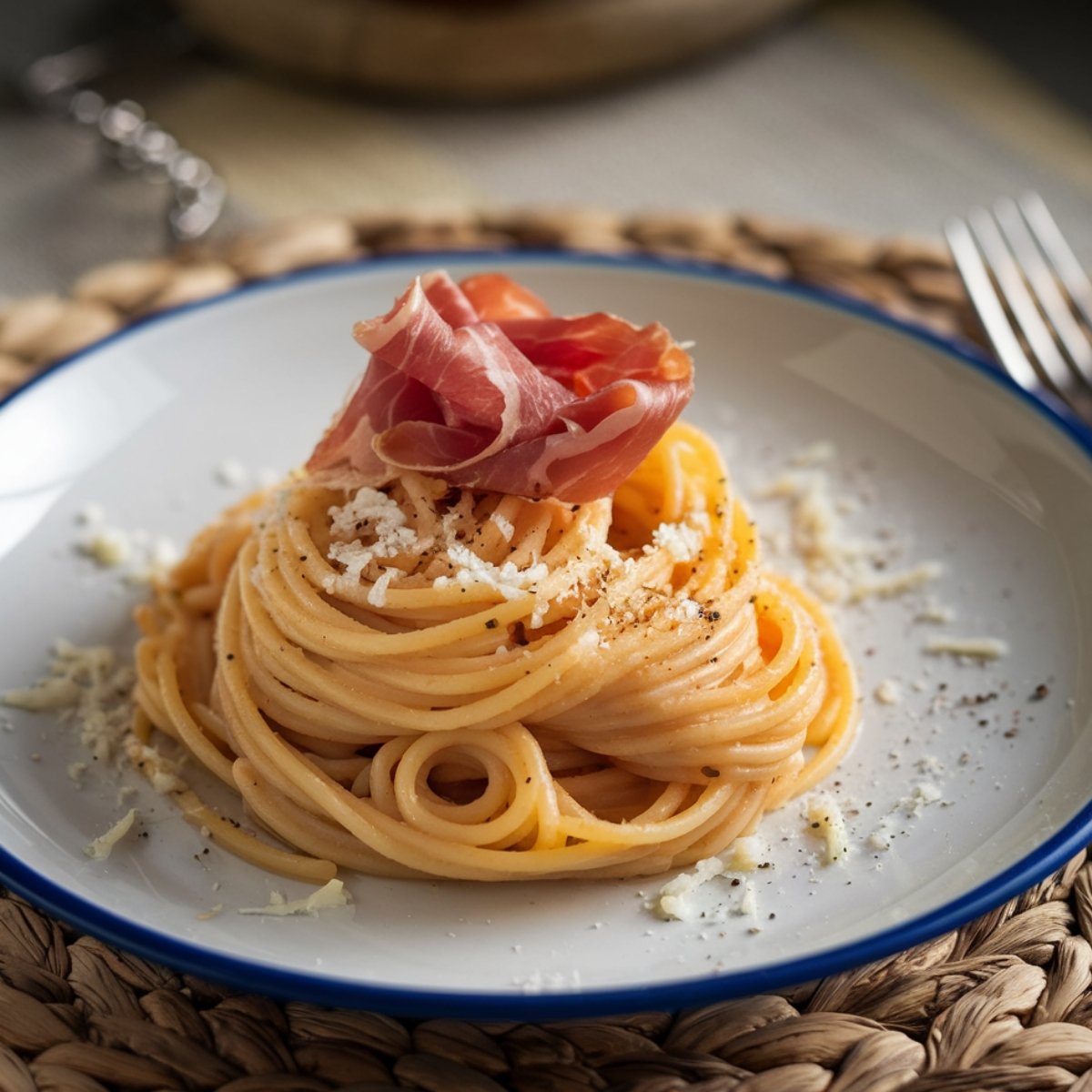
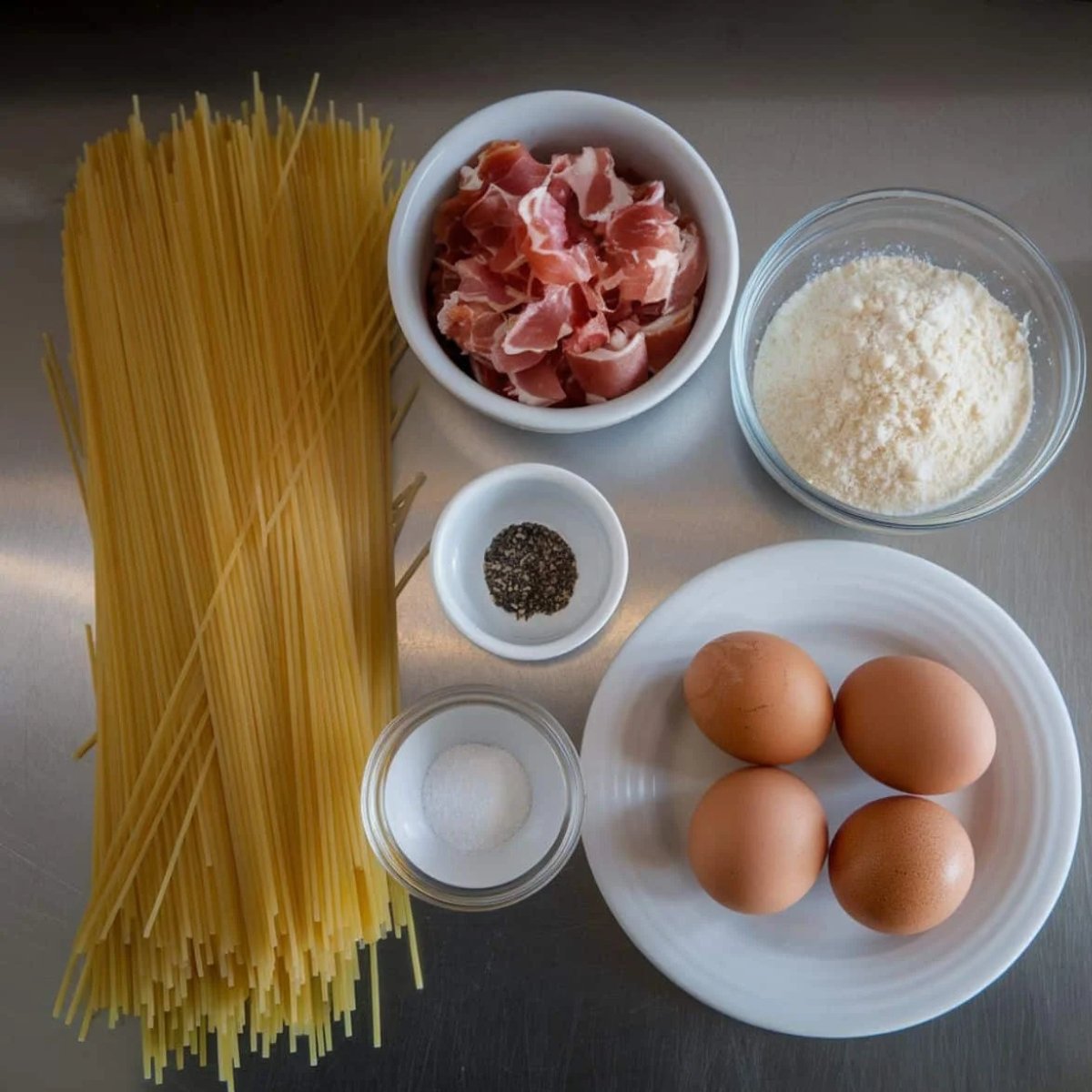
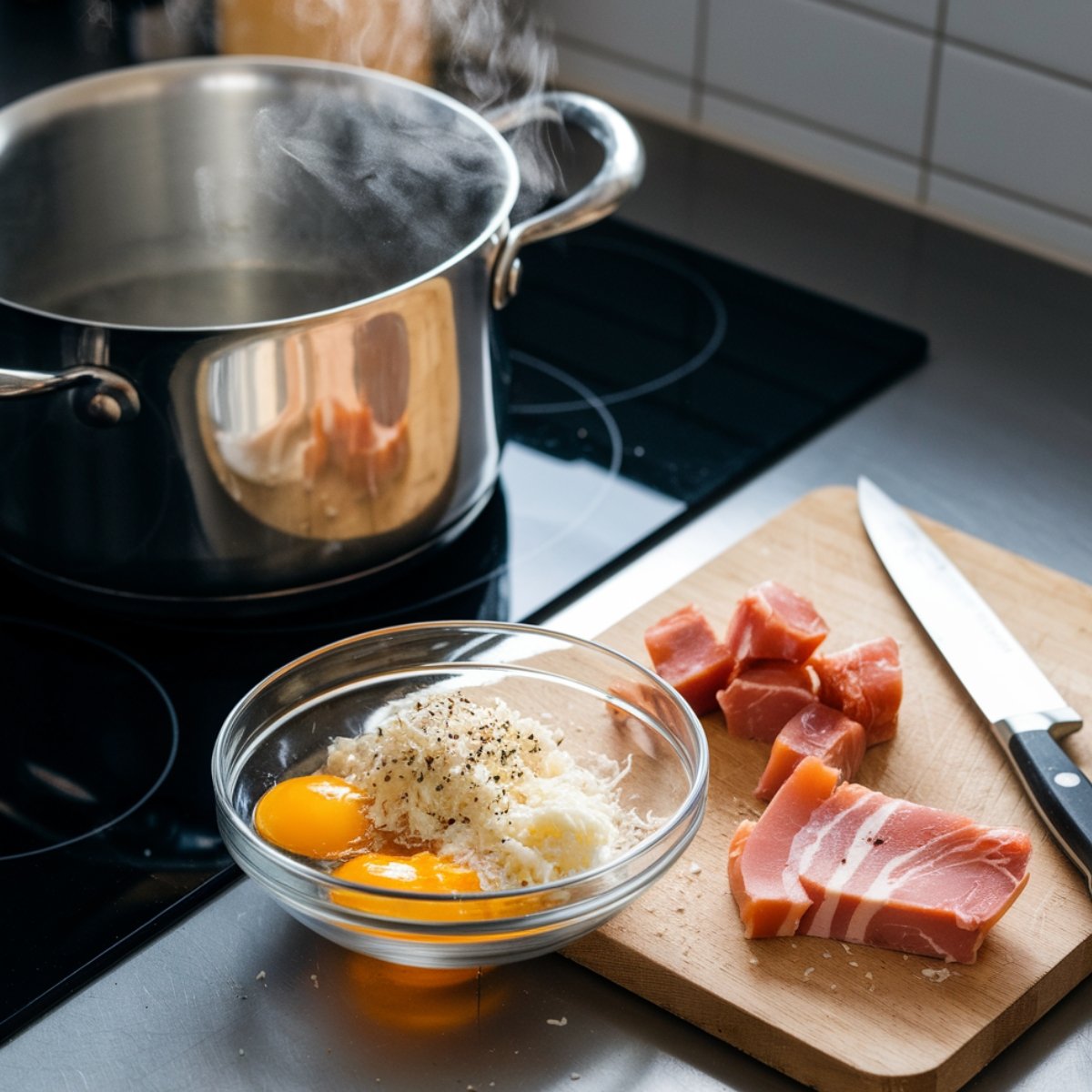
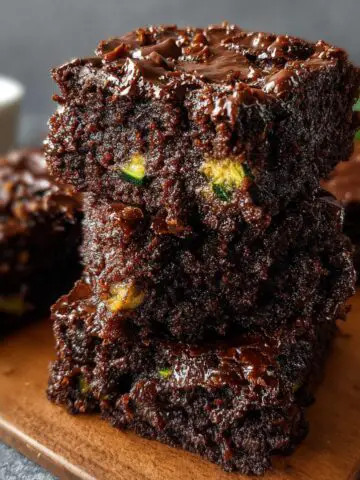

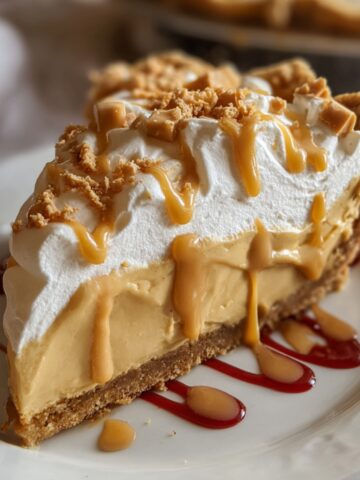

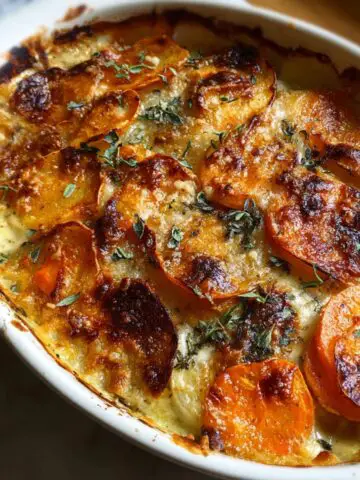

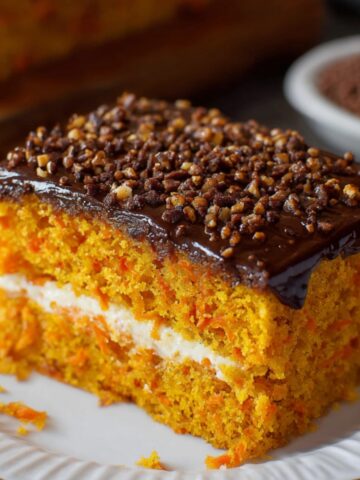
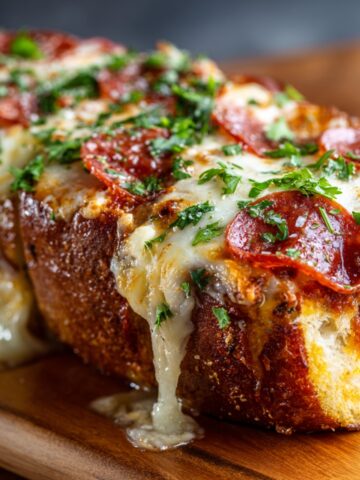
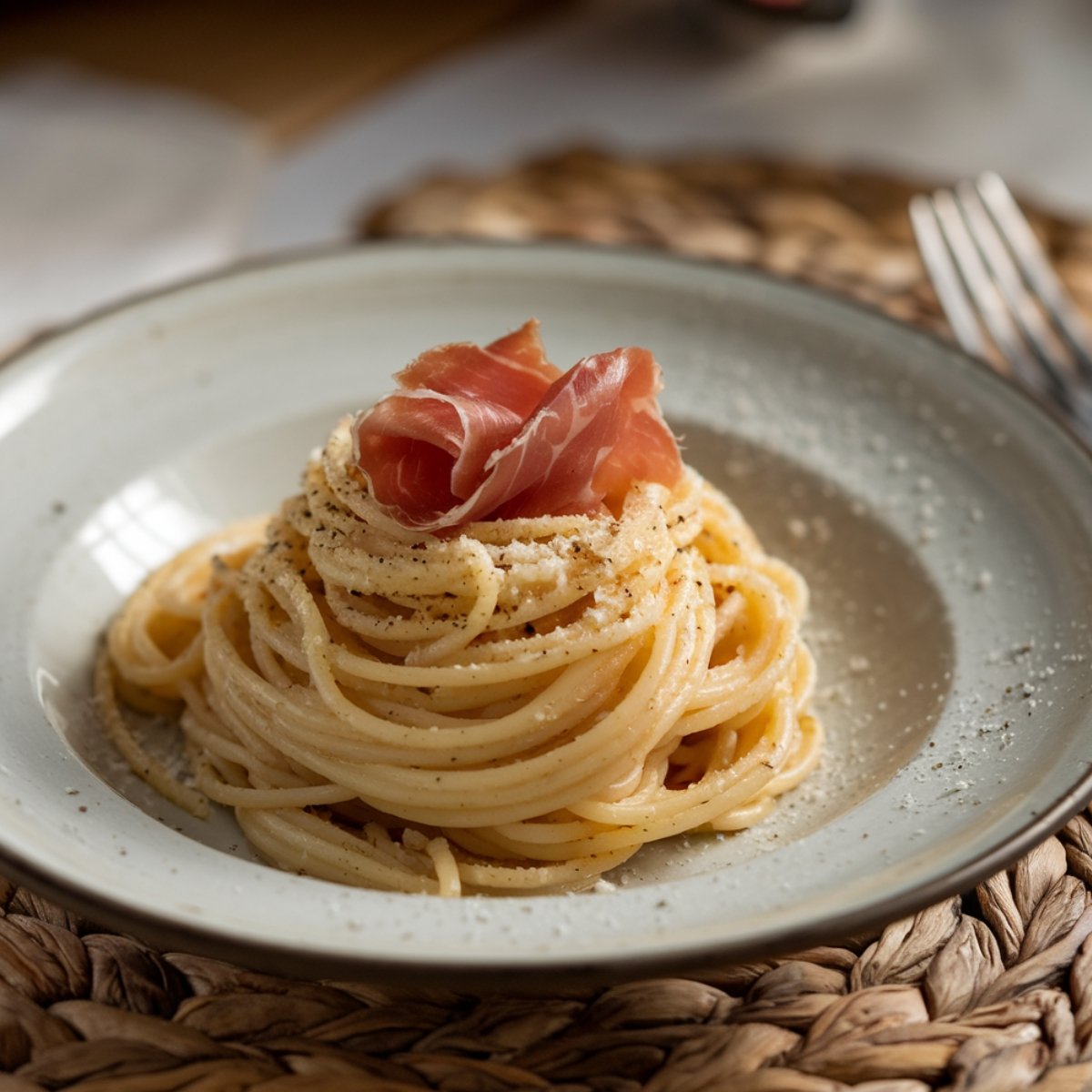
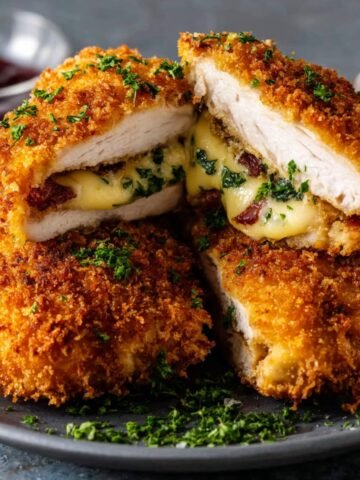

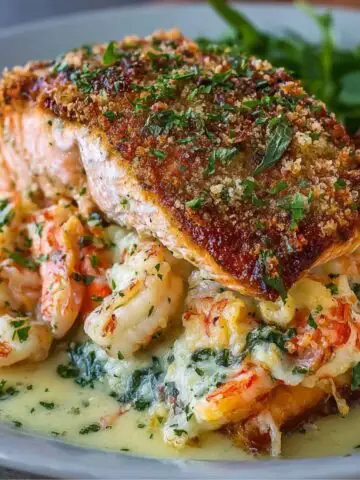
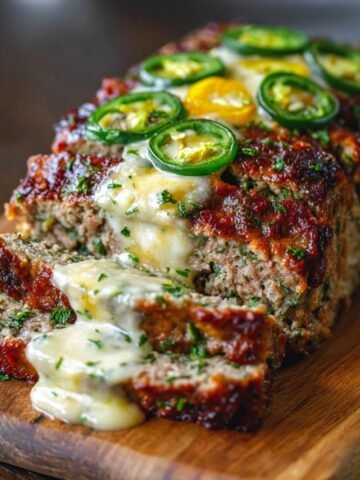
Leave a Reply